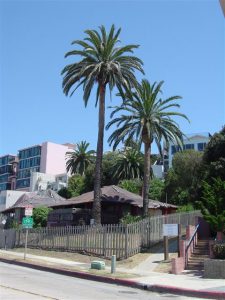Tree Problems and Tree Care Tips
Top Ten Tree Problems
- Lace Bug: Lace Bugs should not be confused with the beneficial insect called Lace Wing. The Lace Bug targets broad-leaf evergreens such as Sycamore trees in late summer and fall. Early detection is the key to getting rid of an infestation. Look for yellow-silver stippling on the topsides of leaves.
- Mites: Spider Mites pose a serious threat to a wide variety of plants, and can seriously impact the visual appearance of a plant. Mites favor warm, dry climates, and are an extremely serious issue for many homeowners. Prevalent on Pines and Citrus trees.
- Caterpillars: Caterpillars can weaken many trees and shrubs, increasing the chance of a secondary infestation. Look for silken/cocoons on the newest growth. Also, look for frass (droppings) on the ground below the tree.
- Borers: Borers are attracted to unhealthy trees, burrowing in and laying eggs inside the trunk. The best defense against Borers is to keep your trees healthy and unstressed. All dead growth should be removed.
- Woolly Adelgid: One of the most common pests, these insects can cause the death of a tree if left untreated. They leave behind a telltale white wax and target primarily older trees like Pines and Pyracantha.
- Scale Insects: These insects target primarily hardwoods and conifers. Some signs of an infestation include abnormal leaf and shoot growth, yellow or red leaves, and branch gouting. Scale insects are also found on most varieties of Coral trees.
- Anthracnose Disease: This fungal disease affects deciduous and flowering trees. Look for powdery white spotting and wrinkling of foliage in spring and summer. Chinese Elms exhibit browning tips of the newest growth.
- Spittle Bugs: Look for bubbly white masses at the base of leaves and twigs. Prevalent on Alder trees in spring and summer.
- Weevil Insects: Weevils are commonly found on flowers and fruits. Look for notches around the edge of leaves.
- Aphid Insects: Aphids are small and pearl shaped. An infestation can cause yellow discoloration and defoliation.
Tree Care Tips
 To avoid malnutrition, be sure to give your trees an adequate amount of micronutrients, such as magnesium sulfate, limestone, gypsum, iron, and zinc. However, trees need very limited amounts of these compounds, and an overabundance can be harmful.
To avoid malnutrition, be sure to give your trees an adequate amount of micronutrients, such as magnesium sulfate, limestone, gypsum, iron, and zinc. However, trees need very limited amounts of these compounds, and an overabundance can be harmful.
Frost damage can be prevented if your tree’s leaves stay hydrated during a period of severe cold. Additionally, frequent watering and extremely light fertilization in anticipation of a cold night can also “harden” the cells of certain plants.
Don’t top trees. Topping is a non-standard pruning procedure where larger trees are cut back to a pre-determined size. It is also known as hat-racking or de-horning. Topping was a traditional tree pruning method that was considered an acceptable method years ago. Research has shown that topped trees actually grow more over a five year period when compared to trees that were pruned correctly. As a result, there is a greater expense for the consumer and no savings over the long run.
Overwatering or poor drainage can cause root rot in your trees. Fungicides or manganese treatments can be effective as treatments or preventative measures.
Selecting a Tree. Always ask these important questions where you purchase the tree and consider the following factors: hardiness in heat or cold, mature height and spread, growth rate, cleanliness, type of root system, moisture and fertilizer requirements, availability, location of utilities above and below ground, disease and insect problems, roads, walkways, security lights, and view corridors.